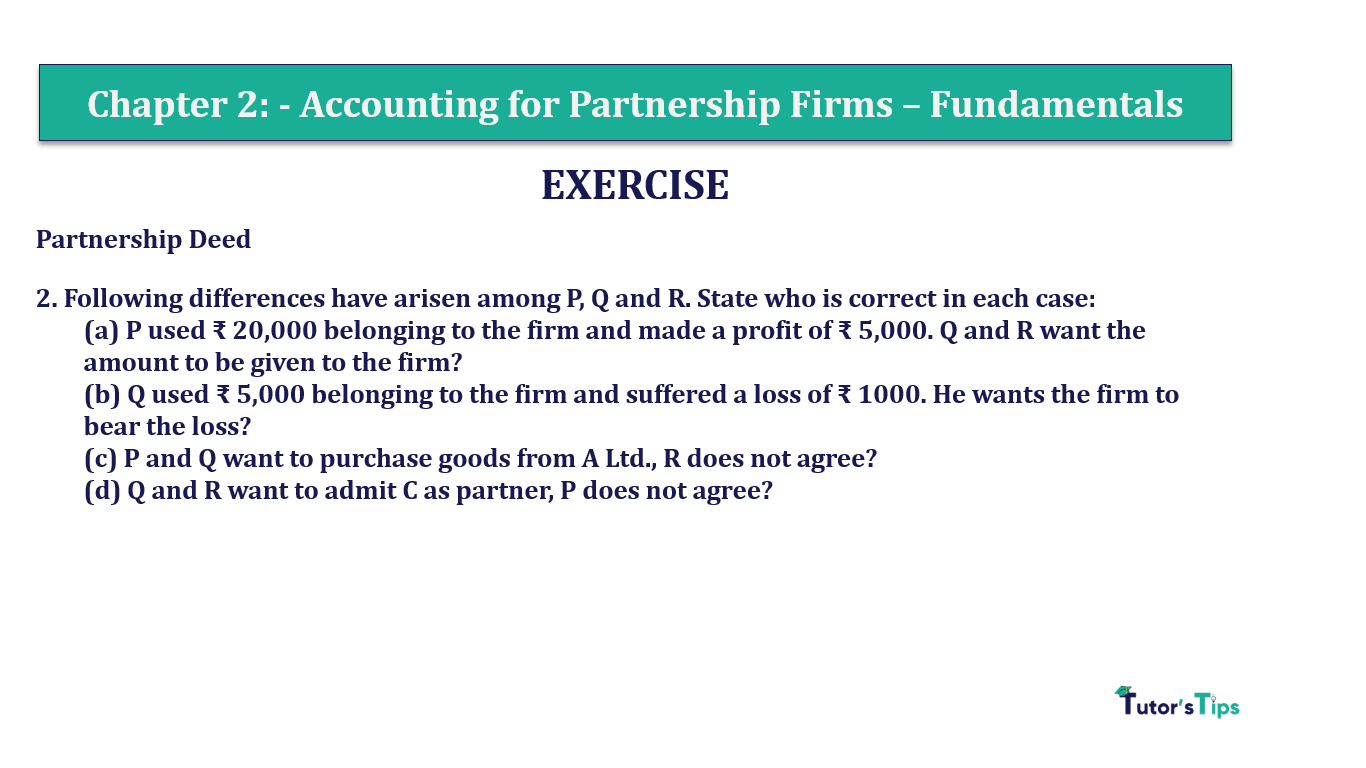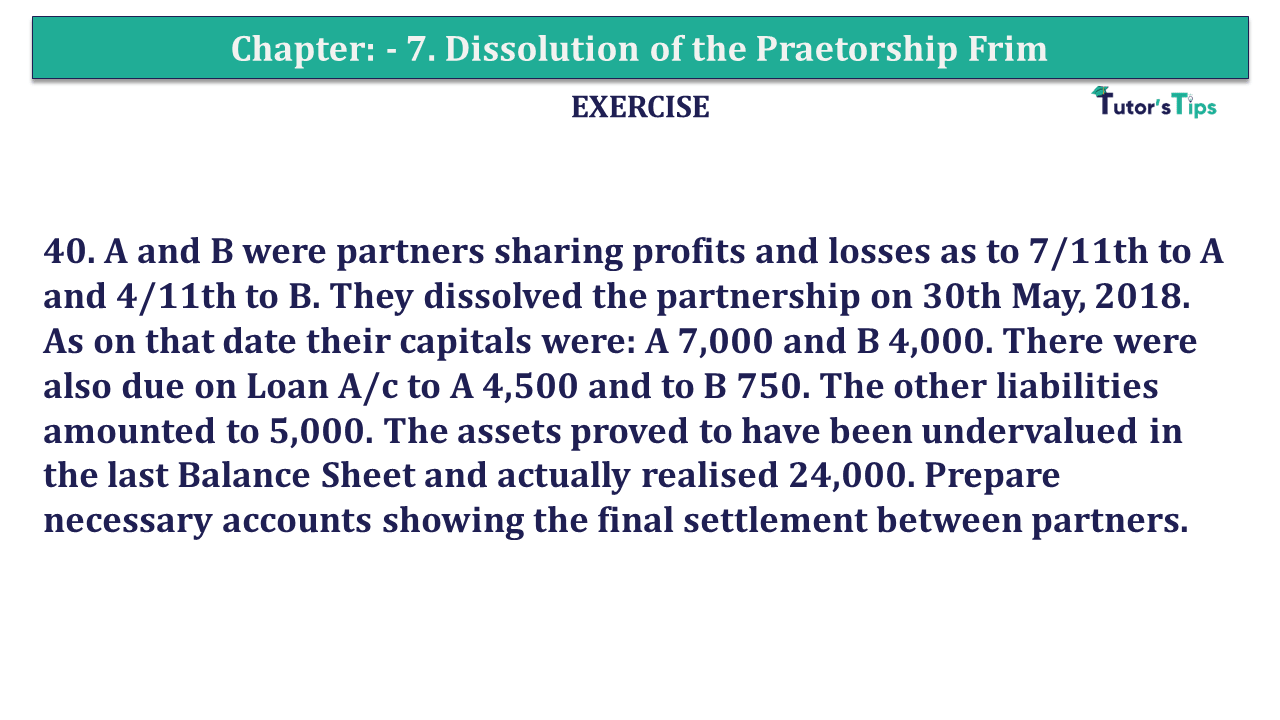Question 2 Chapter 2 of +2-A
Partnership Deed
2. Following differences have arisen among P, Q, and R. State who is correct in each case:
(a) P used ₹ 20,000 belonging to the firm and made a profit of ₹ 5,000. Q and R want the amount to be given to the firm.
(b) Q used ₹ 5,000 belonging to the firm and suffered a loss of ₹ 1000. He wants the firm to bear the loss?
(c) P and Q want to purchase goods from A Ltd., R does not agree?
(d) Q and R want to admit C as a partner, P does not agree?
The solution of Question 2 Chapter 2 of +2-A:
| Accounting Treatment if Partnership Deed Absence |
||
| Cases |
Treatments |
The explanation according to the Provision of Act |
| (a) P used ₹ 20,000 belonging to the firm and made a profit of ₹ 5,000. Q and R want the amount to be given to the firm? | P is bound to pay Rs 20,000 together with a profit of Rs 5,000 to the firm because this amount belongs to the firm. | As per the Principal and Agent relationship, P is principal as well as agent to the firm and to Q and R. As per this rule, any profit earned by an agent (P) by using the firm’s property is attributable to the firm. |
| (b) Q used ₹ 5,000 belonging to the firm and suffered a loss of ₹ 1000. He wants the firm to bear the loss? | Q is liable to pay Rs 5,000 to the firm. As per the Partnership Act, 1932, every partner of a partnership firm is liable to the firm for any loss caused by his/her willful negligence. | Here Q is solely responsible for the loss of Rs 1,000 because he used the property of the firm and also represented himself as a principal rather than an agent to the other partners and to the firm. |
| (c) P and Q want to purchase goods from A Ltd., R does not agree? | P and Q may buy goods from A Ltd. | As per Partnership Act, 1932, a partner has a right to buy and sell goods without consulting the other partners unless a Public Notice has been given by the partnership firm to restrict the partners to buy and sell. |
| (d) Q and R want to admit C as a partner, P does not agree? | C will not be admitted because one of the partners P has not agreed to admit C. | As per the Partnership Act, a new partner cannot be admitted into a firm unless all the existing partners agree on the same decision. In other words, a new partner can be admitted to a partnership firm with the consent of all the existing partners. |
Thanks, Please Like and share with your friends
Comment if you have any questions.
Also, Check out the solved question of previous Chapters: –
T.S. Grewal’s Double Entry Book Keeping +2 (Vol. I: Accounting for Not-for-Profit Organizations and Partnership Firms)
- Chapter No. 1 – Financial Statement of Not-For-Profit Organisations
- Chapter No. 2 – Accounting for Partnership Firms – Fundamentals
- Chapter No. 3 – Goodwill: Nature and Valuation
- Chapter No. 4 – Change in Profit-Sharing Ratio Among the Existing Partners
- Chapter No. 5 – Admission of a Partner
- Chapter No. 6 – Retirement/Death of a Partner
- Chapter No. 7 – Dissolution of a Partnership Firm
T.S. Grewal’s Double Entry Book Keeping (Vol. II: Accounting for Companies)
- Chapter No. 8 – Company Accounts – Accounting for Share Capital
- Chapter No. 9 – Company Accounts – Issue of Debentures
- Chapter No. 10 – Redemption of Debentures
T.S. Grewal’s Double Entry Book Keeping (Vol. II: Accounting for Companies)
- Chapter No. 1 – Financial Statements of a Company
- Chapter No. 2 – Financial Statement Analysis
- Chapter No. 3 – Tools of Financial Statement Analysis – Comparative Statements and Common- Size Statements
- Chapter No. 4 – Accounting Ratios
- Chapter No. 5 – Cash Flow Statement
Check out T.S. Grewal +2 Book 2020@ Official Website of Sultan Chand Publication

Advertisement-X







Leave a Reply